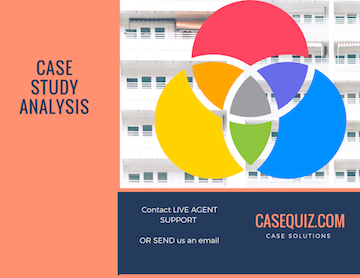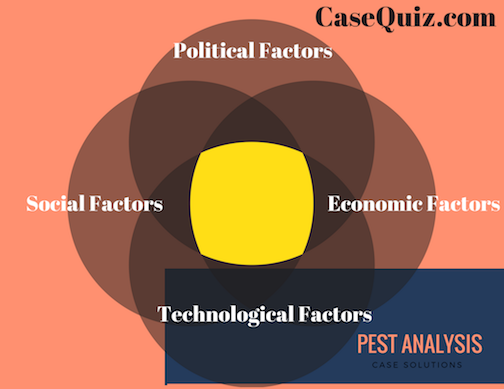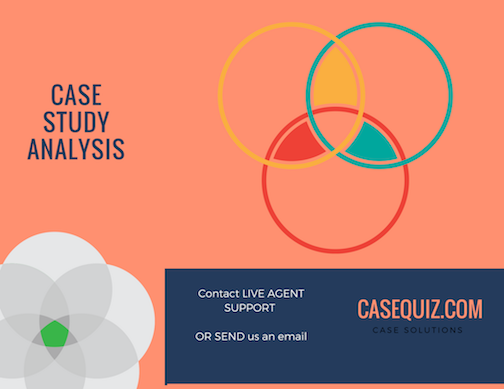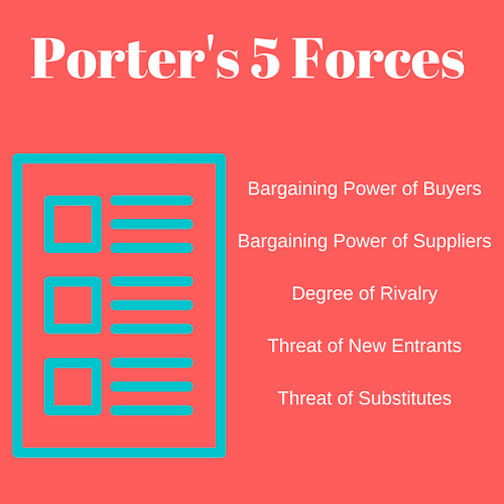Ceres Gardening Company Case Analysis
Harvard Business Case Studies Solutions – Assignment Help
In most courses studied at Harvard Business schools, students are provided with a case study. Major HBR cases concerns on a whole industry, a whole organization or some part of organization; profitable or non-profitable organizations. Student's role is to analyze the case and diagnose the situation, identify the problem and then give appropriate recommendations and steps to be taken.
To make a detailed case analysis, student should follow these steps:
STEP 1: Reading Up Harvard Case Study Method Guide:
Case study method guide is provided to students which determine the aspects of problem needed to be considered while analyzing a case study. It is very important to have a thorough reading and understanding of guidelines provided. However, poor guide reading will lead to misunderstanding of case and failure of analyses. It is recommended to read guidelines before and after reading the case to understand what is asked and how the questions are to be answered. Therefore, in-depth understanding f case guidelines is very important.

Harvard Case Study Solutions
STEP 2: Reading The Ceres Gardening Company Case Study Harvard Case Study:
To have a complete understanding of the case, one should focus on case reading. It is said that case should be read two times. Initially, fast reading without taking notes and underlines should be done. Initial reading is to get a rough idea of what information is provided for the analyses. Then, a very careful reading should be done at second time reading of the case. This time, highlighting the important point and mark the necessary information provided in the case. In addition, the quantitative data in case, and its relations with other quantitative or qualitative variables should be given more importance. Also, manipulating different data and combining with other information available will give a new insight. However, all of the information provided is not reliable and relevant.
When having a fast reading, following points should be noted:
- Nature of organization
- Nature if industry in which organization operates.
- External environment that is effecting organization
- Problems being faced by management
- Identification of communication strategies.
- Any relevant strategy that can be added.
- Control and out-of-control situations.
When reading the case for second time, following points should be considered:
- Decisions needed to be made and the responsible Person to make decision.
- Objectives of the organization and key players in this case.
- The compatibility of objectives. if not, their reconciliations and necessary redefinition.
- Sources and constraints of organization from meeting its objectives.
After reading the case and guidelines thoroughly, reader should go forward and start the analyses of the case.
STEP 3: Doing The Case Analysis Of Ceres Gardening Company Case Study:
To make an appropriate case analyses, firstly, reader should mark the important problems that are happening in the organization. There may be multiple problems that can be faced by any organization. Secondly, after identifying problems in the company, identify the most concerned and important problem that needed to be focused.
Firstly, the introduction is written. After having a clear idea of what is defined in the case, we deliver it to the reader. It is better to start the introduction from any historical or social context. The challenging diagnosis for Ceres Gardening Company Case Study and the management of information is needed to be provided. However, introduction should not be longer than 6-7 lines in a paragraph. As the most important objective is to convey the most important message for to the reader.
After introduction, problem statement is defined. In the problem statement, the company's most important problem and constraints to solve these problems should be define clearly. However, the problem should be concisely define in no more than a paragraph. After defining the problems and constraints, analysis of the case study is begin.
STEP 4: SWOT Analysis of the Ceres Gardening Company Case Study HBR Case Solution:
SWOT analysis helps the business to identify its strengths and weaknesses, as well as understanding of opportunity that can be availed and the threat that the company is facing. SWOT for Ceres Gardening Company Case Study is a powerful tool of analysis as it provide a thought to uncover and exploit the opportunities that can be used to increase and enhance company's operations. In addition, it also identifies the weaknesses of the organization that will help to be eliminated and manage the threats that would catch the attention of the management.
This strategy helps the company to make any strategy that would differentiate the company from competitors, so that the organization can compete successfully in the industry. The strengths and weaknesses are obtained from internal organization. Whereas, the opportunities and threats are generally related from external environment of organization. Moreover, it is also called Internal-External Analysis.
STRENGTHS:
In the strengths, management should identify the following points exists in the organization:
- Advantages of the organization
- Activities of the company better than competitors.
- Unique resources and low cost resources company have.
- Activities and resources market sees as the company's strength.
- Unique selling proposition of the company.
WEAKNESSES:
- Improvement that could be done.
- Activities that can be avoided for Ceres Gardening Company Case Study.
- Activities that can be determined as your weakness in the market.
- Factors that can reduce the sales.
- Competitor's activities that can be seen as your weakness.
OPPORTUNITIES:
- Good opportunities that can be spotted.
- Interesting trends of industry.
- Opportunities for Ceres Gardening Company Case Study can be obtained from things such as:
- Change in technology and market strategies
- Government policy changes that is related to the company's field
- Changes in social patterns and lifestyles.
- Local events.
THREATS:
Following points can be identified as a threat to company:
- Company's facing obstacles.
- Activities of competitors.
- Product and services quality standards
- Threat from changing technologies
- Financial/cash flow problems
- Weakness that threaten the business.
Following points should be considered when applying SWOT to the analysis:
- Precise and verifiable phrases should be sued.
- Prioritize the points under each head, so that management can identify which step has to be taken first.
- Apply the analyses at proposed level. Clear yourself first that on what basis you have to apply SWOT matrix.
- Make sure that points identified should carry itself with strategy formulation process.
- Use particular terms (like USP, Core Competencies Analyses etc.) to get a comprehensive picture of analyses.
STEP 5: PESTEL/ PEST Analysis of Ceres Gardening Company Case Study Case Solution:
Pest analyses is a widely used tool to analyze the Political, Economic, Socio-cultural, Technological, Environmental and legal situations which can provide great and new opportunities to the company as well as these factors can also threat the company, to be dangerous in future.
Pest analysis is very important and informative. It is used for the purpose of identifying business opportunities and advance threat warning. Moreover, it also helps to the extent to which change is useful for the company and also guide the direction for the change. In addition, it also helps to avoid activities and actions that will be harmful for the company in future, including projects and strategies.
To analyze the business objective and its opportunities and threats, following steps should be followed:
- Brainstorm and assumption the changes that should be made to organization. Answer the necessary questions that are related to specific needs of organization
- Analyze the opportunities that would be happen due to the change.
- Analyze the threats and issues that would be caused due to change.
- Perform cost benefit analyses and take the appropriate action.

Pest analysis
PEST FACTORS:
POLITICAL:
- Next political elections and changes that will happen in the country due to these elections
- Strong and powerful political person, his point of view on business policies and their effect on the organization.
- Strength of property rights and law rules. And its ratio with corruption and organized crimes. Changes in these situation and its effects.
- Change in Legislation and taxation effects on the company
- Trend of regulations and deregulations. Effects of change in business regulations
- Timescale of legislative change.
- Other political factors likely to change for Ceres Gardening Company Case Study.
ECONOMICAL:
- Position and current economy trend i.e. growing, stagnant or declining.
- Exchange rates fluctuations and its relation with company.
- Change in Level of customer's disposable income and its effect.
- Fluctuation in unemployment rate and its effect on hiring of skilled employees
- Access to credit and loans. And its effects on company
- Effect of globalization on economic environment
- Considerations on other economic factors
SOCIO-CULTURAL:
- Change in population growth rate and age factors, and its impacts on organization.
- Effect on organization due to Change in attitudes and generational shifts.
- Standards of health, education and social mobility levels. Its changes and effects on company.
- Employment patterns, job market trend and attitude towards work according to different age groups.

case study solutions
- Social attitudes and social trends, change in socio culture an dits effects.
- Religious believers and life styles and its effects on organization
- Other socio culture factors and its impacts.
TECHNOLOGICAL:
- Any new technology that company is using
- Any new technology in market that could affect the work, organization or industry
- Access of competitors to the new technologies and its impact on their product development/better services.
- Research areas of government and education institutes in which the company can make any efforts
- Changes in infra-structure and its effects on work flow
- Existing technology that can facilitate the company
- Other technological factors and their impacts on company and industry
These headings and analyses would help the company to consider these factors and make a "big picture" of company's characteristics. This will help the manager to take the decision and drawing conclusion about the forces that would create a big impact on company and its resources.
STEP 6: Porter's Five Forces/ Strategic Analysis Of The Ceres Gardening Company Case Study Case Study:
To analyze the structure of a company and its corporate strategy, Porter's five forces model is used. In this model, five forces have been identified which play an important part in shaping the market and industry. These forces are used to measure competition intensity and profitability of an industry and market.

porter's five forces model
These forces refers to micro environment and the company ability to serve its customers and make a profit. These five forces includes three forces from horizontal competition and two forces from vertical competition. The five forces are discussed below:
- THREAT OF NEW ENTRANTS:
- as the industry have high profits, many new entrants will try to enter into the market. However, the new entrants will eventually cause decrease in overall industry profits. Therefore, it is necessary to block the new entrants in the industry. following factors is describing the level of threat to new entrants:
- Barriers to entry that includes copy rights and patents.
- High capital requirement
- Government restricted policies
- Switching cost
- Access to suppliers and distributions
- Customer loyalty to established brands.
- THREAT OF SUBSTITUTES:
- this describes the threat to company. If the goods and services are not up to the standard, consumers can use substitutes and alternatives that do not need any extra effort and do not make a major difference. For example, using Aquafina in substitution of tap water, Pepsi in alternative of Coca Cola. The potential factors that made customer shift to substitutes are as follows:
- Price performance of substitute
- Switching costs of buyer
- Products substitute available in the market
- Reduction of quality
- Close substitution are available
- DEGREE OF INDUSTRY RIVALRY:
- the lesser money and resources are required to enter into any industry, the higher there will be new competitors and be an effective competitor. It will also weaken the company's position. Following are the potential factors that will influence the company's competition:
- Competitive advantage
- Continuous innovation
- Sustainable position in competitive advantage
- Level of advertising
- Competitive strategy
- BARGAINING POWER OF BUYERS:
- it deals with the ability of customers to take down the prices. It mainly consists the importance of a customer and the level of cost if a customer will switch from one product to another. The buyer power is high if there are too many alternatives available. And the buyer power is low if there are lesser options of alternatives and switching. Following factors will influence the buying power of customers:
- Bargaining leverage
- Switching cost of a buyer
- Buyer price sensitivity
- Competitive advantage of company's product
- BARGAINING POWER OF SUPPLIERS:
- this refers to the supplier's ability of increasing and decreasing prices. If there are few alternatives o supplier available, this will threat the company and it would have to purchase its raw material in supplier's terms. However, if there are many suppliers alternative, suppliers have low bargaining power and company do not have to face high switching cost. The potential factors that effects bargaining power of suppliers are the following:
- Input differentiation
- Impact of cost on differentiation
- Strength of distribution centers
- Input substitute's availability.
STEP 7: VRIO Analysis of Ceres Gardening Company Case Study:
Vrio analysis for Ceres Gardening Company Case Study case study identified the four main attributes which helps the organization to gain a competitive advantages. The author of this theory suggests that firm must be valuable, rare, imperfectly imitable and perfectly non sustainable. Therefore there must be some resources and capabilities in an organization that can facilitate the competitive advantage to company. The four components of VRIO analysis are described below:
VALUABLE: the company must have some resources or strategies that can exploit opportunities and defend the company from major threats. If the company holds some value then answer is yes. Resources are also valuable if they provide customer satisfaction and increase customer value. This value may create by increasing differentiation in existing product or decrease its price. Is these conditions are not met, company may lead to competitive disadvantage. Therefore, it is necessary to continually review the Ceres Gardening Company Case Study company's activities and resources values.
RARE: the resources of the Ceres Gardening Company Case Study company that are not used by any other company are known as rare. Rare and valuable resources grant much competitive advantages to the firm. However, when more than one few companies uses the same resources and provide competitive parity are also known as rare resources. Even, the competitive parity is not desired position, but the company should not lose its valuable resources, even they are common.
COSTLY TO IMITATE: the resources are costly to imitate, if other organizations cannot imitate it. However, imitation is done in two ways. One is duplicating that is direct imitation and the other one is substituting that is indirect imitation.
Any firm who has valuable and rare resources, and these resources are costly to imitate, have achieved their competitive advantage. However, resources should also be perfectly non sustainable. The reasons that resource imitation is costly are historical conditions, casual ambiguity and social complexity.
ORGANIZED TO CAPTURE VALUE: resources, itself, cannot provide advantages to organization until it is organized and exploit to do so. A firm (like Ceres Gardening Company Case Study) must organize its management systems, processes, policies and strategies to fully utilize the resource's potential to be valuable, rare and costly to imitate.
STEP 8: Generating Alternatives For Ceres Gardening Company Case Study Case Solution:
After completing the analyses of the company, its opportunities and threats, it is important to generate a solution of the problem and the alternatives a company can apply in order to solve its problems. To generate the alternative of problem, following things must to be kept in mind:
- Realistic solution should be identified that can be operated in the company, with all its constraints and opportunities.
- as the problem and its solution cannot occur at the same time, it should be described as mutually exclusive
- it is not possible for a company to not to take any action, therefore, the alternative of doing nothing is not viable.
- Student should provide more than one decent solution. Providing two undesirable alternatives to make the other one attractive is not acceptable.
Once the alternatives have been generated, student should evaluate the options and select the appropriate and viable solution for the company.
STEP 9: Selection Of Alternatives For Ceres Gardening Company Case Study Case Solution:
It is very important to select the alternatives and then evaluate the best one as the company have limited choices and constraints. Therefore to select the best alternative, there are many factors that is needed to be kept in mind. The criteria's on which business decisions are to be selected areas under:
- Improve profitability
- Increase sales, market shares, return on investments
- Customer satisfaction
- Brand image
- Corporate mission, vision and strategy
- Resources and capabilities
Alternatives should be measures that which alternative will perform better than other one and the valid reasons. In addition, alternatives should be related to the problem statements and issues described in the case study.
STEP 10: Evaluation Of Alternatives For Ceres Gardening Company Case Study Case Solution:
If the selected alternative is fulfilling the above criteria, the decision should be taken straightforwardly. Best alternative should be selected must be the best when evaluating it on the decision criteria. Another method used to evaluate the alternatives are the list of pros and cons of each alternative and one who has more pros than cons and can be workable under organizational constraints.
STEP 11: Recommendations For Ceres Gardening Company Case Study Case Study (Solution):
There should be only one recommendation to enhance the company's operations and its growth or solving its problems. The decision that is being taken should be justified and viable for solving the problems.
Ceres Gardening Company Case Analysis
Source: https://www.casequiz.com/ceres-gardening-company-case-study-143248/
Posted by: moodyolded1943.blogspot.com

0 Response to "Ceres Gardening Company Case Analysis"
Post a Comment